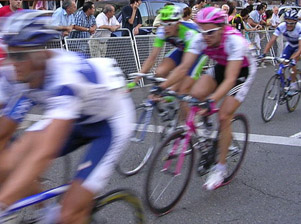This page has been archived and is no longer updated

At the 1976 Montreal Summer Olympics, the East German women's swim team won eleven of thirteen events. This would have been an astonishing feat for any country; it was all the more so for a small nation. Publicly, the press celebrated this notable event. But behind the scenes, a number of organizations began quietly investigating. On July 18, 2000, Manfred Ewald, the former East German sports minister, and Dr. Manfred Hoeppner, the top East German sports doctor, were convicted by the German government of having overseen a systematic, secret, and illegal doping program for East German athletes — including the celebrated 1976 women's swim team — throughout the 1970s and 1980s. The program had improved the athletes' strength and speed without their knowledge, giving them a competitive advantage over athletes from other countries. Sadly, it had also led to swift and serious deterioration of the athletes' health. By the 1990s, many were reporting heart disease, infertility, or cancer.
The practice of enhancing physical performance with ingested substances has been around since ancient times. The Greeks were known to use a form of opium; other cultures have used mushrooms and even strychnine. But in modern times, the use of synthetic drugs to enhance athletic performance, commonly referred to as doping, has exploded, as evidenced by the recent massive doping scandals involving legendary athletes in the Tour de France and Major League Baseball. In response, a number of anti-doping organizations have been created to aggressively pursue what they regard as fairness in competition.
The moral and ethical landscape surrounding doping is far from simple. Baseball slugger Barry Bonds has been labeled a fraud in the press for using tetrahydrogestrinone (THG) and a testosterone-based cream ("the clear") to boost and sustain his performance; yet after the University of Florida football team revealed that a new drink, dubbed "Gatorade", had given them a crucial advantage in their victory in the 1967 Orange Bowl, the drink became a fixture on football sidelines. How should we as society determine what are acceptable strategies for performance enhancement and what are not?
The World Anti-Doping Agency (WADA), set up in 1999 by the International Olympic Committee to combat illegal performance enhancement in sports, defines doping as use of drugs that meets two of three criteria: enhancement of athletic performance, harm to health or safety, and violation of the "spirit of the sport". While this provides useful guidelines, there are still many complex questions to be debated in the coming years. Is the impact of the behavior of professional athletes on young, amateur athletes a legitimate foundation for restricting the activities of professionals? What are the precise health risks of doping? In the race between scientists who are developing ever-more effective and clandestine performance-enhancing drugs, and those who are developing strategies to detect them and measure their risk, who is winning? How should we weigh the achievements of modern athletes who use performance-enhancing drugs against those of athletes from the past?
Given victory's financial and social rewards, doping will not likely disappear from the athletic landscape. Therefore, it is important that anyone interested in sports have a rich understanding of this issue. In this Spotlight, we provide a range of resources that guide you through the history of doping and drug testing in professional and amateur sports, as well as the science involved on both sides of the doping battleground.
Image: Howard Kingsnorth/Science Photo Library.
Look at the drugs and treatments used by dopers, and their performance effects.
This article provides a brief overview of the science behind gene doping.
PBS highlights the most popular forms of doping and their major health risks.
Since Congress got involved in Major League Baseball's steroid scandal, the Committee on Oversight and Government Reform has monitored steroid use in sports.
See how drug testing is governed inside the "World Anti-Doping Guide" (2009), which informs drug testers and athletes how to legitimate results (pdf).
Take this quiz offered by WADA to test your understanding of the policies that athletes must abide by in order to compete in international events.
Anti-Doping Research offers a list of landmark dates, with emphasis on milestones in drug testing and regulation, in "Key Anti-Doping Developments in Sport."
View information from WADA about whereabouts, and how testing data is tracked.
WADA provides an overview of the research involved in the development of a test for hGH, a hard to detect substance that is on the cutting-edge of doping (pdf).
Game theory helps explain the costs and benefits of doping.
Read a piece from 1925 about doping in horse-racing, an enduring controversy.
Watch this CBS News video about steroid use among high school athletes.
Watch videos about the 1976 steroid scandal in East Germany to see how politics led to organized doping of athletes and blatant disregard for their health.
Explore a timeline of doping in baseball, lists of the drugs used, and the people involved in widespread performance-enhancing drug use during the Steroid Era.
Listen to Olympic silver medalist shot-putter Adam Nelson describe how doping scandals have changed how fans view the physical achievements of honest athletes.
